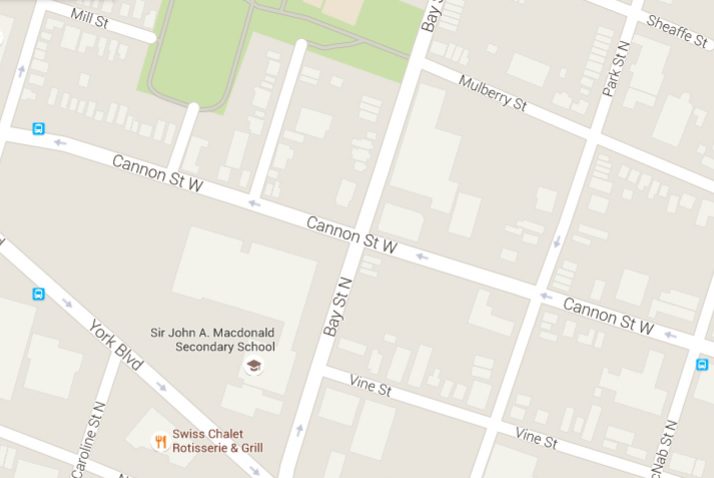One year later, Hamilton, Ont.’s new bike lanes are a noted success, with the lumps and bruises to prove it
n 2014, Hamilton, Ont. installed new bike lanes on Cannon Street, and the numbers recorded after a year of use demonstrate that it's doing what it was meant to -- namely, provide cyclists with a dedicated corridor through the city.


In 2014, Hamilton, Ont. installed new bike lanes on Cannon Street, and the numbers recorded after a year of use demonstrate that it’s doing what it was meant to — namely, provide cyclists with a dedicated corridor through the city.
Twelve months later, the lanes almost seem to be working too well.
Over the summer, the CBC reports, 500 to 600 cycling trips were counted on the Cannon bike lane, a dramatic spike in the number of active commuting riders. Certainly, the lanes have worked, getting more people in the saddle in the southern Ontario city. With that spike, however, another surge has been seen. Since October of last year, twenty more collisions than before have been reported. Compared with 2013, a year that saw six crashes involving bikes or e-bikes, the lapsed year since the lane’s opening has seen 26.
It’s a matter of educating both drivers and cyclists alike about the new infrastructure, officials say. Nonetheless, Hamilton’s chief engineer with respect to all things traffic-related, David Ferguson, sees promise in the statistics — both the good and the not-so-great ones.
“Even though the number of crashes have increased,” he told the CBC, “the overall volume of users has increased too. I see all kinds of users on there, people who are riding to work and otherwise. You want to encourage active transportation.”
In some of those scrapes, it’s been riders running red lights; in others, drivers don’t properly yield to cyclists. Still, two-wheeling residents of the area attribute a growing interest in cycling, and a growing comfort among Hamilton cyclists in getting out and riding, to the lanes themselves. The frequency of collisions, it’s suggested, is a symptom of the lane’s success.
“It’s really great” said Janet Simons, a Hamilton physician and cyclist. “I definitely feel much safer there. I definitely feel more inclined to cycle.”
